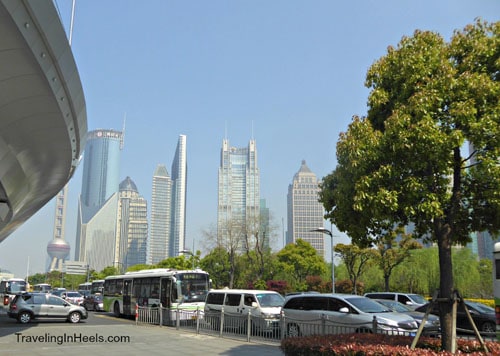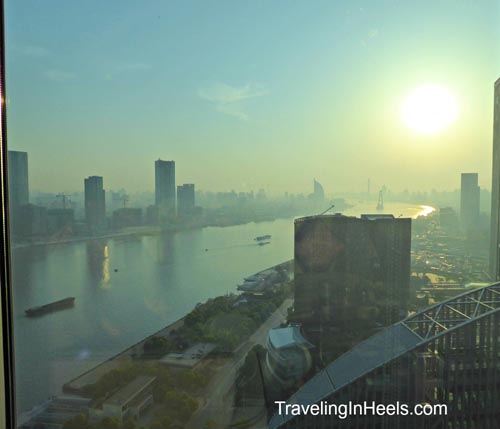China has one of the highest rates of automobile accidents in the world, with an estimated 100,000 people killed on the road in this country. After just 24 hours in Shanghai (escorted by Mandarin Journeys), I quickly learned a red light does not mean stop in Shanghai, what I began to call the “Shanghai Stop.” Everyone is in a hurry, more so when behind the wheel of a car, and I cringed at how many near accidents happened in front of us. Welcome to Driving Etiquette in Shanghai.

With traffic violations in Shanghai reported at more than 6.1 million, one might think drivers would be more cautious. Driving etiquette in China? Well, not so much. The Travelers Guide to Driving Etiquette seems to be mere a suggestion.
Compare the traffic violations to a population of more than 24 million people living in a condensed area (6,340.5 square kilometers/2,448 square miles), perhaps it’s no surprise traffic is so congested and automobile accidents in Shanghai are common.
As one of the largest cities in China, Shanghai (translated to above the sea) is a port city on the Huangpu River, south of where the Yangtze River empties into the East China Sea. This amazing location gives Shanghai the perfect storm as an excellent sea and river port. It also has created a massive amount of congested traffic.
Keeping Safe as Pedestrians in Shanghai, China
We stayed at the Grand Kempinski Hotel Shanghai in the Pudong, the “new part” of the city. Located east of the Huangpu River across from the historic city center in Puxi, this area is considered the financial district — and is bustling with activity.

This part of the city is home to many of Shanghai’s well-known sky-scrapers and buildings, such as Luijazui Finance and Trade Zone, Shanghai Stock Exchange, and the second largest skyscraper, the Shanghai World Financial Center. In addition to the crazy traffic, there’s also an incredible amount of pedestrians, navigating their way through the streets and intersections.
I quickly learned that looking both ways and obeying the traffic walk signs aren’t a guarantee of safety when navigating the streets of Shanghai. Look both ways, walk tentatively. and keep an eye out for cars — but don’t look the drivers in the eyes. It’s as if it gives the drivers permission to push through, red light or not. Everyone is fighting for their inch and that extra minute to get to the next mile. Honestly I’m surprised there weren’t more accidents.
Riding in a Vintage Motorcycle Sidecar
Congested traffic didn’t stop me from taking to the streets of Shanghai in a vintage motorcycle sidecar. From my viewpoint riding in the sidecar, I was actually surprised at how well my driver navigated the city streets for 2 hours, without a close call. Read more here: http://bit.ly/1HWaxCI
Would I get behind the wheel in Shanghai? Most likely not. When traveling to foreign countries, I tend to edge toward safety first and hail a taxi or navigate the city’s public transportation.
To read more about my travels with Mandarin Journeys: http://snip.ly/a2ij

Disclaimer: The Travellers Guide to Driving Etiquette sponsored this post, but opinions expressed are my own.
![]()

